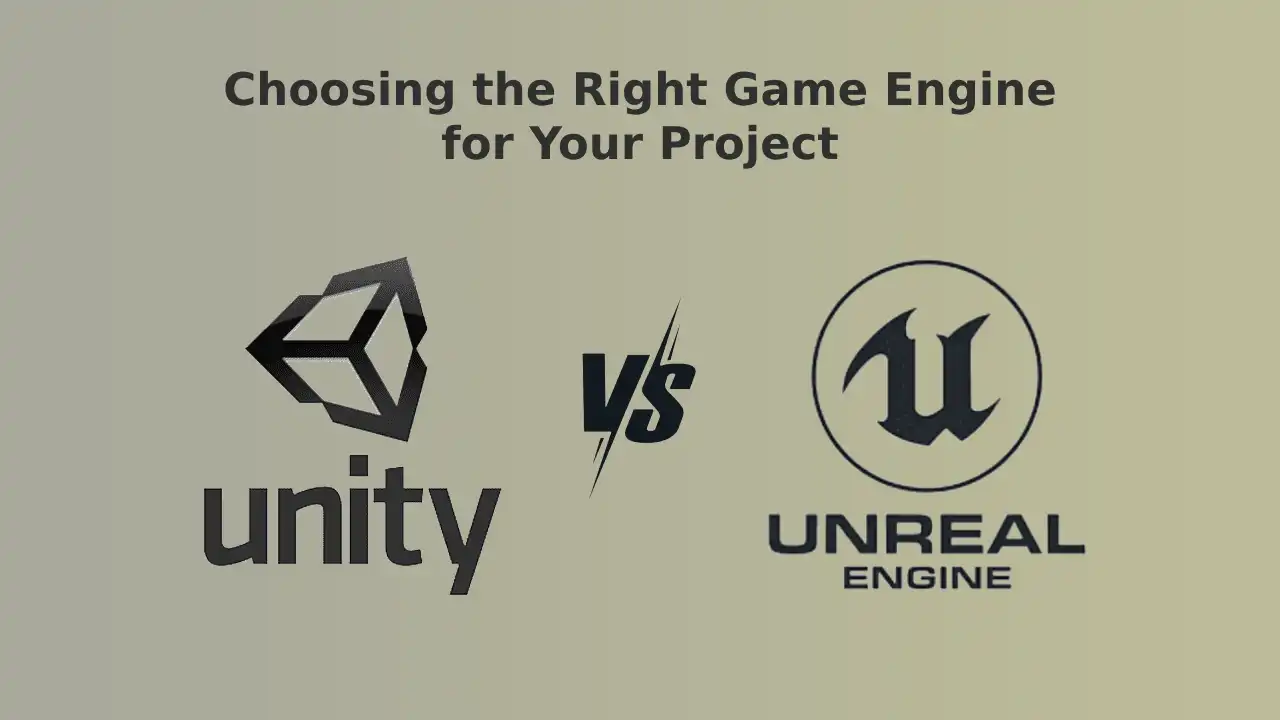Unity and Unreal Engine are two of the most prominent game engines available today. Both have revolutionized game development, offering tools to create visually stunning and highly interactive games. While Unity has built a strong reputation for flexibility and ease of use, Unreal Engine stands out for its cutting-edge visual fidelity and real-time rendering capabilities.
Brief History
Unity, launched in 2005, focused on democratizing game development, making it accessible to developers of all skill levels. Unreal Engine, introduced in 1998 by Epic Games, originally targeted AAA game studios but has since expanded its accessibility.
Feature Comparison: Unity 6 vs. Unreal 5.1
- Graphics & Rendering:
Unreal 5.1 excels with Nanite and Lumen, providing unparalleled realism.
Unity 6 offers robust High Definition Render Pipeline (HDRP) for AAA-quality visuals, and its Universal Render Pipeline (URP) ensures performance scalability across platforms.
- Flexibility:
Unity’s modular architecture supports both 2D and 3D development, making it ideal for indie developers.
Unreal is tailored more for 3D, high-end projects.
Lighting Systems
- Unreal’s Lumen enables real-time global illumination and reflections with minimal setup.
- Unity’s Enlighten and new Realtime GI solutions offer greater control, especially for stylized lighting effects.
Documentation & Community Support
- Unity:
- Extensive official documentation
- Large, active community forums.
- Asset Store provides pre-made tools and resources.
- Unreal:
- Comprehensive, albeit complex, documentation.
- Support through forums, AnswerHub, and marketplace assets.
Platform Support
Both engines support AR, VR, and XR platforms:
- Unity: Known for its lightweight nature, it’s preferred for AR/VR applications where performance optimization is critical.
- Unreal: Strong AR/VR support, especially for high-end hardware.
Learning Curve
Unity is often regarded as beginner-friendly due to its intuitive interface and extensive tutorials. Unreal, while powerful, has a steeper learning curve owing to its complexity and focus on AAA-quality features.
Games Developed with Unity and Unreal
- Unity:
- Hollow Knight
- Among Us
- Lost In Random
- Ori and the Blind Forest
- Unreal:
- Fortnite
- Gears of War
- PUBG: Battlegrounds
- Hellblade: Senua’s Sacrifice
Programming Languages and Visual Scripting
- Unity: Primarily uses C#. It also provides a visual scripting tool, Bolt.
- Unreal: Uses C++ and Blueprint, an advanced visual scripting system.
Pricing Models
- Unity: Free tier available. Paid tiers are based on revenue and features, making it accessible for indie developers.
- Unreal: Free until $1 million in revenue, then a 5% royalty fee.
Applications Beyond Gaming
- Unity: Widely used in architecture, automotive, and simulations.
- Unreal: Strong presence in film production (e.g., “The Mandalorian”) and virtual production.
Tools that Differentiate
- Unity’s Play Mode tools allow real-time testing on devices.
- Unreal’s MetaHuman Creator enables detailed character creation.
Conclusion
Both Unity and Unreal Engine excel in their respective domains. Unity’s versatility and ease of use make it a go-to for a wide range of projects, from 2D to AR/VR. Unreal’s graphical capabilities are unmatched, making it the choice for high-end cinematic experiences. Your decision will ultimately depend on the specific needs of your project.


